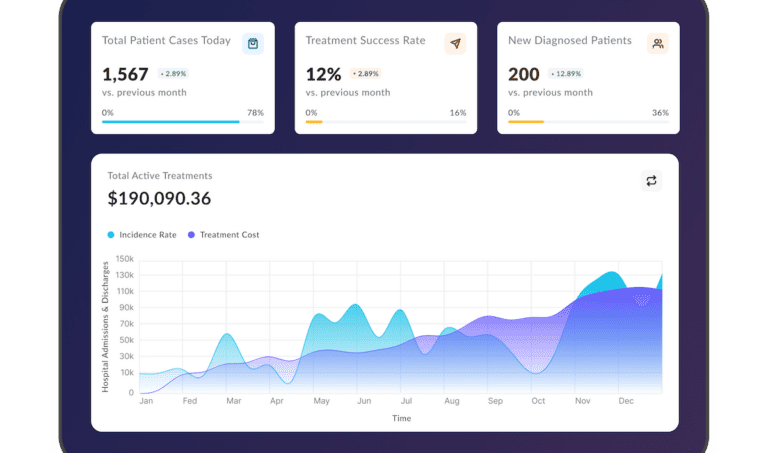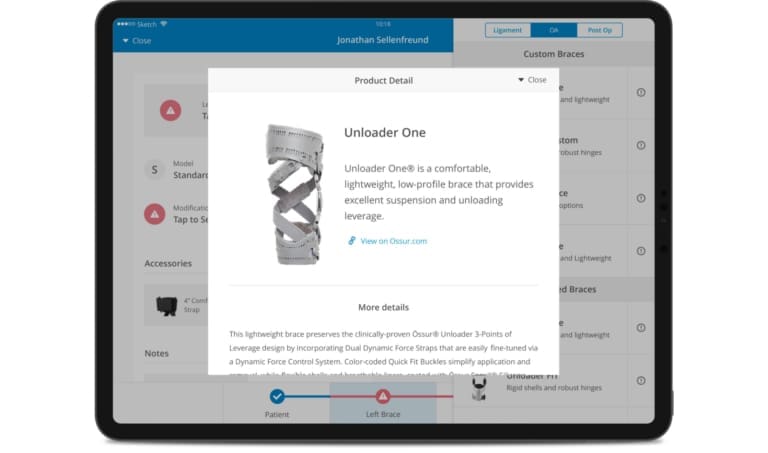Guide to Implementing Microservices Architecture on AWS [With Examples]
Updated: June 4, 2025
Scaling up may be complicated if the product architecture isn’t designed to be scalable, which is often the case with monolith applications. In such a scenario, you have two options: allocate even more resources and spend a fortune to scale vertically or reorganize your application using microservices architecture on AWS and scale horizontally cost-effectively. We’d always go for the second option – implementing microservices infrastructure.
Going for microservices can be of great use for any SaaS provider. But what are microservices, exactly? Let’s review the advantages of microservices architecture in AWS and how to implement it. You’ll also find some real cases from Relevant Software’s portfolio below, so keep reading.

We provide companies with senior tech talent and product development expertise to build world-class software. Let's talk about how we can help you.
Contact usTable of Contents
What are Microservices?
AWS characterizes microservices as autonomous software components with specific functionalities that operate independently and are governed by smaller, self-sufficient teams. Well-defined APIs help these microservices interact with each other, facilitating polyglot development. This implies that software engineers are free to select tools suited best for each function a microservice executes instead of being limited to one programming language.
You can build, update, scale, and manage every microservice separately, which immensely advances the pace of innovation, as well as the cost-effectiveness of infrastructure management, in contrast to the development of monolithic apps.
Monolithic vs. Microservices Architecture
Monolithic applications operate through closely coupled processes that are dependent on one another to function. So, if one process fails, it hinders the functionality of the entire application. In instances when the whole process experiences a surge in demand, it requires scaling up the complete application. The worst of it is that over time, the code becomes bulky and really complex, so introducing new features or adjusting existing ones will be a time-consuming and labor-intensive task.
By contrast, in microservices, all processes are decoupled and operate within distinct code envelopes (Docker containers), so you can scale, modify, or restart them independently. Each microservice executes one particular function, and communication amongst them is performed through well-defined interfaces and lightweight, consistent APIs. The best part is that even if the code of a microservice grows more complex over time, you can effortlessly divide it into other microservices without compromising the performance of the entire application.
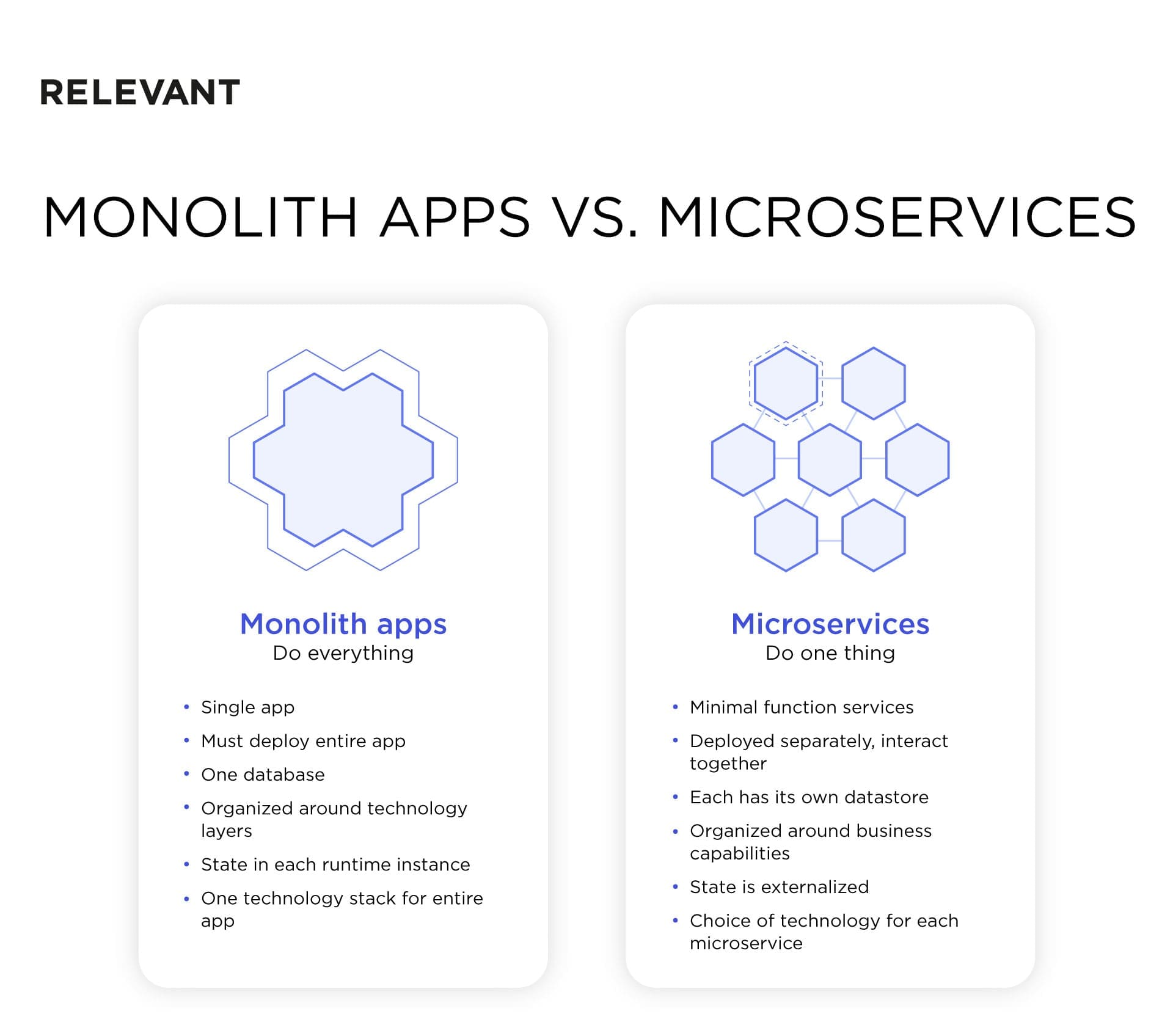
An AWS microservices example that illustrates this is the Amazon.com retail website, which utilizes microservices for individual functionalities like user recommendations, product catalog, and customer order services, showcasing the scalability and independence of each service.
Benefits of Microservices
Aside from cost-efficiency, going for microservices-based software development provides various benefits:
- Shorter time-to-market. Since different teams can develop microservices autonomously, there are fewer roadblocks for the entire product, which reduces the overall time-to-market.
- Better scalability. As the demand for specific features fluctuates, the capability to scale them independently across diverse servers and providers becomes invaluable.
- Operational resilience. Given the autonomous operation of each microservices, the failure of a single component doesn’t compromise the entire product, unlike monolithic applications. Plus, rebooting a faulty module is an easy task.
- Management efficiency. Software products structured around microservices are much more manageable in terms of deployment, updates, and overall management.
- Simplified product assessment. The decomposition of monolithic apps into independent units simplifies the understanding of each microservice’s source code so developers can evaluate and update them more rapidly.
- Agility. Each microservice is owned, developed, and run by a single small, self-contained team working within a well-understood context. Thus, every team works at its own pace, bringing more agility across the organization.
- Deployability. Because every microservice runs separately, it can be easily updated and rolled back if something goes wrong.
- Code reusability. As microservices run as separate pieces of code, each one can be used as a building block for the same functionality in multiple products.
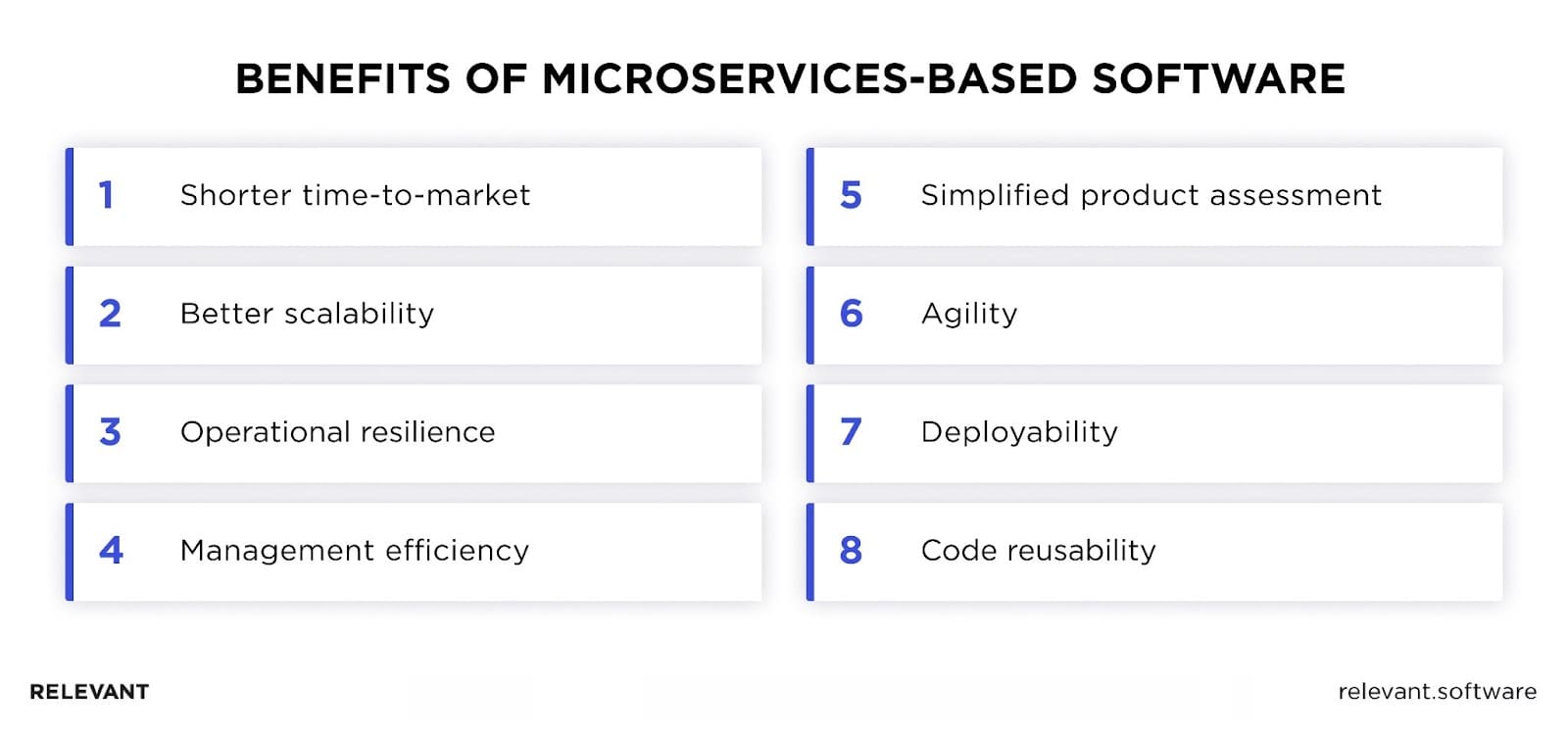
Microservices are widely regarded as the best option for developing applications in the cloud. The rapidly expanding global microservices architecture market reflects this trend, as it’s anticipated to grow from $5.31 billion in 2023 to approximately $21.61 billion by 2030, exhibiting a CAGR of 18.66%.
The simplicity of microservices implementation can vary across different cloud providers. AWS microservices architecture, for one thing, can be a perfect choice for deploying and running an application of any scope.
Why AWS for Microservices
Microservices AWS (Amazon Web Services) is a top choice for launching applications, as evident from Amazon’s lion’s share of the global cloud infrastructure market, which is 32%. This cloud platform’s wide range of IaaS, PaaS, SaaS solutions, and SDK packages makes microservices architecture on AWS a prime solution. It provides tons of foundational elements to meet the software tech requirements of any complexity and scale. That’s why it’s so popular among AWS customers. So, what are the main Amazon’s offerings:
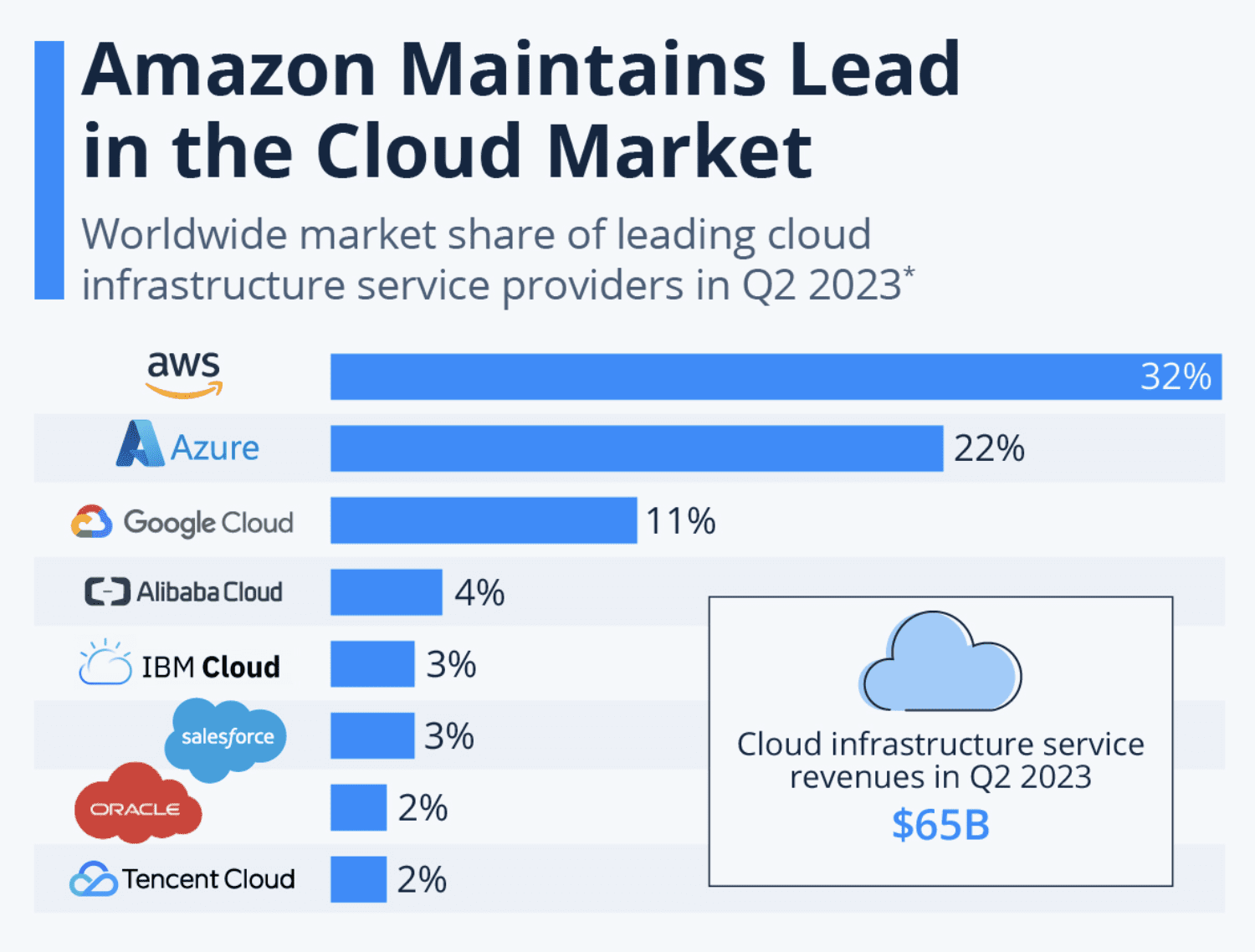
Image credit: Statista
- Computing power. AWS EC2 Elastic Container Service and AWS Lambda Serverless Computing provide robust computing capabilities.
- Data store. Secure Storage (Amazon S3) and Amazon ElastiCache ensure data safety and accessibility.
- Database. You can find a wide range of different databases, including Amazon RDB, Amazon Aurora, Amazon DynamoDB, and many more. So, you definitely will find the one that fits your needs.
- Networking. Solutions like Amazon Service Discovery, AWS App Mesh, AWS Elastic Load Balancing, Amazon API Gateway, and AWS Route 53 for DNS facilitate seamless networking.
- Messaging. Amazon SQS is instrumental for message queuing, while SNS is excellent for publishing and notifications.
- Monitoring. AWS Cloudtrail specializes in API monitoring, and Amazon CloudWatch is essential for infrastructure monitoring.
- DevOps and CI/CD. Amazon Container Image Repository (Amazon ECR), along with a suite of other DevOps tools, is key for enabling CI/CD workflows.
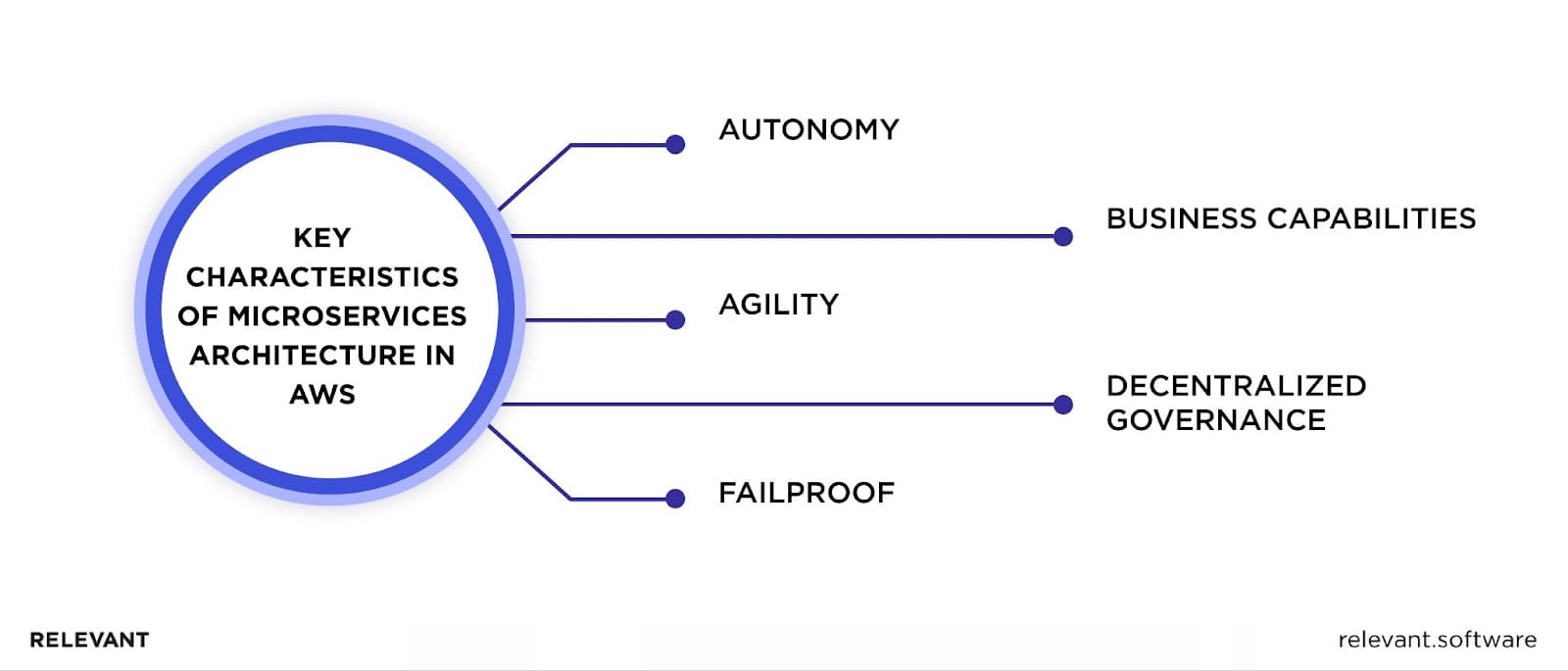
AWS microservice allows you to configure the requisite architecture and choose any operating system, database, framework, programming language, or other essential services. This adaptability not only simplifies the migration of existing apps but also lets you develop new applications from the ground up much faster.
Microservices on AWS
Opting for microservices with AWS was the right choice for Relevant Software. We leveraged detailed guides on deploying Java and Node.js microservices on Amazon EC2 and building containerized microservices using Docker containers on AWS. This allowed us to follow best practices and build scalable, cost-efficient, and highly performant infrastructures for our customers.
The basic microservice architecture in AWS looks like this:
- User Instances & Static Content. User instances are efficiently run on AWS CloudFront CDN, where static content is securely stored in Amazon S3.
- Traffic Routing & Microservices Deployment. The traffic ingress is managed by Amazon Automatic Load Balancer (ALB), which directs it towards the Kubernetes cluster. Within this cluster, Docker containers run microservices on Amazon ECS.
- Data Caching & Storage. Data is cached by ElastiCache and stored in any database of your choice, be it DynamoDB, Aurora, or RDS.
- Service Discovery. AWS Cloud Map is used for service discovery, enabling the efficient locating and interaction of services.
- Performance Optimization. Incorporating performance cookies optimizes user experience and system efficiency by storing user preferences and reducing load times.
This orchestrated workflow offers limitless scalability for both the front end through CloudFront CDN and the back end via ECS. Moreover, advanced caching mechanisms and secure data storage solutions strengthen the application’s resilience.
Implementing Microservices on AWS
There is a great detailed step-by-step guide on implementing microservices on AWS, and to save your time, here’s the essence of it.
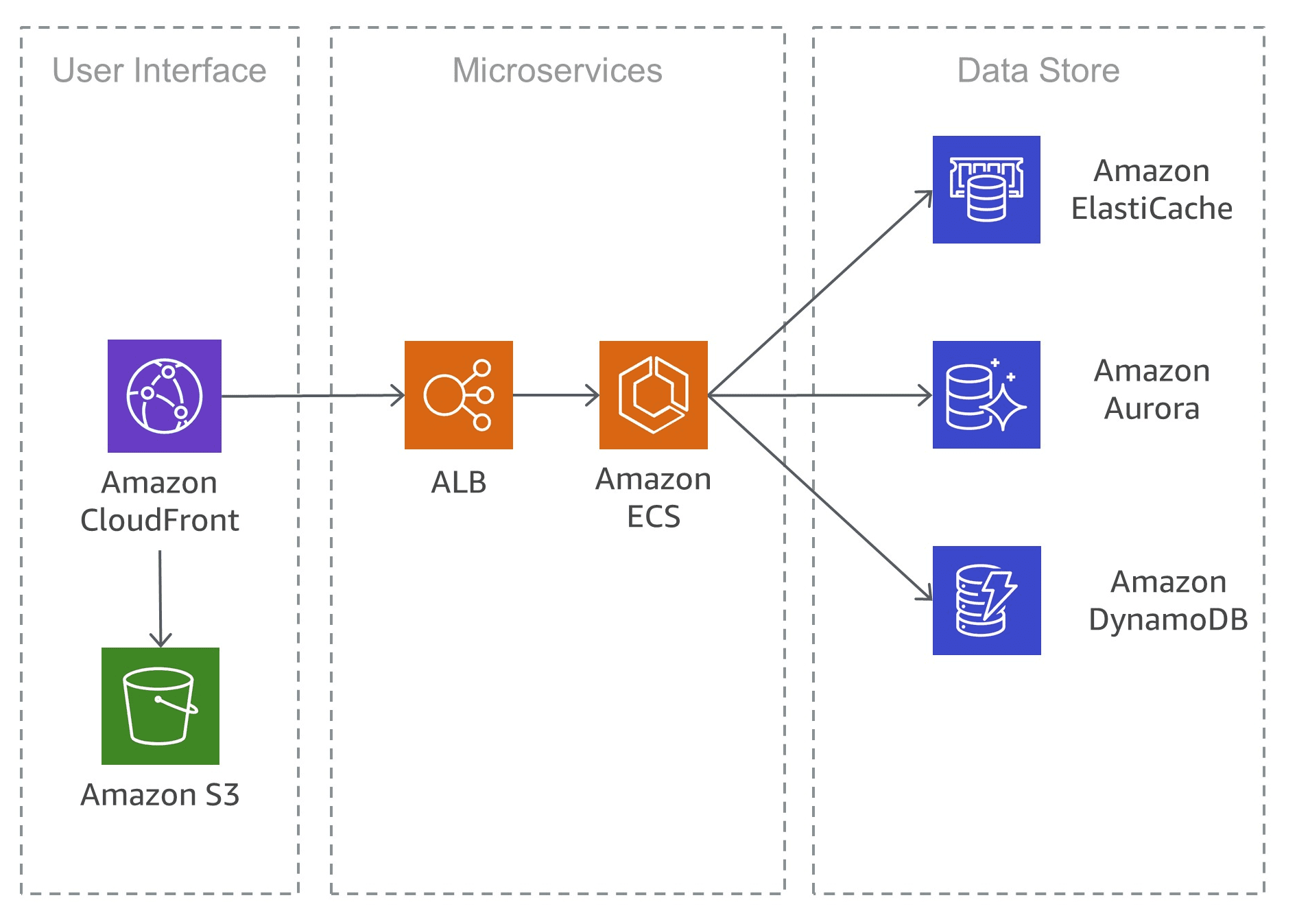
Planning and Designing Microservices
This phase is critical as it shapes the foundation of your AWS microservice architecture and ensures that it is aligned with your business objectives. So, thorough planning at the beginning will help you prevent potential challenges and inefficiencies down the line. Here’s a breakdown of the critical steps:
- Assess Business Requirements. Start by analyzing your existing systems and setting clear goals. Why do you want to implement microservices architecture? How will it help you to achieve business objectives?
- Design Microservices. Once you are clear about the requirements, apply microservices design principles. This step involves creating an AWS microservices architecture diagram, a visual representation of the interaction and structure of each microservice. Also, choose the right AWS services and tools that fit the design principles and meet your project’s specific needs.
- Consider Security. By prioritizing security, we mean using the robust features provided by AWS and following best practices to protect the microservices. It includes incorporating encryption, managing access controls, and regularly auditing the security policies. Implementing security measures at this stage helps in identifying and mitigating potential vulnerabilities, ensuring data protection, and maintaining the trust of stakeholders and users.
Setting Up a Development Environment
Before the actual development process, you should prepare an environment to ensure it is favorable for creating and deploying microservices in AWS. It involves selecting the right tools and technologies for your project.
- Choosing Languages and Frameworks. Selecting the right programming languages and frameworks is essential because this choice impacts the ease of development, the performance of the application, and its ability to integrate with other systems. Plus, the selected technologies should fit your project’s needs, streamline the development process, and tailor the microservices to the application’s specific requirements.
- Utilize AWS Development Tools. Employing AWS development tools like AWS CodeBuild and CodeDeploy can help you considerably reduce development time, avoid errors, and ensure smoother deployment. These tools simplify the microservices development, testing, and deployment while improving the efficiency and reliability of the development process.
Building Microservices
Now, you’re ready to materialize the architecture and actually build your microservices. So, what it takes to do, and which tools will help you with that?
- Write Code and Create APIs. Develop your microservices using AWS Lambda, a PaaS service that allows you to upload your code while AWS will do the rest for you. The key benefit here is that you operate a serverless platform, meaning you do not have to look under the hood and configure the underlying servers. This ensures speed of operations, unlimited scalability, and cost-efficiency of running microservices. Meanwhile, AWS ECS and EKS offer straightforward access to container management and Kubernetes clusters, which is a cost-effective option whether you opt to execute your microservices implementation with an internal or remote team. As for the API development, consider using API Gateway from AWS, which will allow you to programmatically create and run RESTful APIs without the need to manage servers.
- Implement CI/CD pipelines to automate testing and deployment of microservices and reduce tons of your time. You can choose Amazon ECR or other DevOps tools you prefer for enabling CI/CD workflows.
- Use AWS CloudWatch for monitoring and logging the performance and health of your microservices. With centralized logs provided by this service, you can spot errors, exceptions, and anomalies and troubleshoot them lightning-fast.
- Analyze Performance. Regularly review performance metrics and logs to detect and resolve bottlenecks within each microservice, optimize resource allocation, and check the load capabilities. The more frequently you perform the analysis, the more guarantee that your microservices function at their peak and interact smoothly with the data store and other elements.
Managing and Scaling Microservices
Once you developed AWS microservices, you want to ensure their steady high performance, scalability, and effortless management. So, here are a few actions to do that:
- Update and Maintain. To make sure that each microservice is using the latest and most stable version of its dependencies, you should update your microservices on a regular basis. This will lessen the possibility of bugs, weaknesses, and performance problems. Additionally, to ensure the integrity and confidentiality of the application and its data, keep your microservices updated with the most recent security patches. Good microservice maintenance optimizes resource use and cuts down on unnecessary costs brought on by over- or under-provisioning of resources.
- Scale with AWS. We recommend using AWS’s auto-scaling features to handle varying loads. It allows your microservices architecture on AWS to adapt to demand changes and provide optimum performance and resource utilization automatically. Whether your app will experience a traffic surge or decline, auto-scaling has got you covered.
Implementing Best Practices and Staying Updated
At this point, your microservices in AWS are built, deployed, scaled, and hopefully are performing well. To ensure they remain robust and highly efficient with time, you should:
- Follow AWS Recommendations. It’s wise to stick to the best practices laid out by AWS for microservices. They offer practical and expert tips on refining the AWS microservices architecture to achieve better security, scalability, and efficiency. What’s more, following those recommendations will reveal how to boost microservices performance and leverage the full potential of AWS capabilities.
- Keep Abreast of Emerging Trends. Keep an eye on new technologies and trends in microservices and AWS to ensure your architecture remains competitive, adaptable, and aligned with the latest industry advancements. Adopting the latest solutions, practices, and tools can improve functionality and help you meet the increasing user needs and expectations.
How We Implemented Microservices on AWS
Just like we promised, here are some of our examples of building microservices with AWS for our clients.
Svenn
One of the clients of Relevant Software, Svenn, required an upgrade and modernization of their service to facilitate integrations with numerous ERP systems. The challenges the client encountered:
- The monolithic structure of a singular instance of Svenn’s service included the implementation of integration with ERP APIs, the management of data processing, and the presentation layer API.
- Integration complexity with other systems, particularly their existing service, could not support several specific ERP integrations.
- Error handling, as ERP systems could update their APIs without prior notice, and the existing system couldn’t detect that or handle various other types of errors.
- Data presentation was lacking, though it was necessary for centralized data comparison and analysis.
AWS microservices architecture was the most optimal strategy to address these challenges. Relevant Software leveraged AWS Step Functions to implement the solution and ensure secure data processing. Now, all services use a Distributor cluster for communication that functions as a data streaming service.
The results are impressive. AWS Step Functions contains AWS Lambda schedule and rules and provides Lambda configuration. Once the input parameters from AWS Step Functions are delivered to the Lambda instance, which contains ERP systems integration logic, they are combined with input parameters from the Transformer service, issue API calls to ERP systems, and send event notifications to the relevant Information topics. This makes adding integration with a new ERP as simple as registering its API within Lambda, and AWS does the rest.
The Transformer service ingests data from ERP_SYSTEM topics, converts it into Svenn data, publishes it to relevant information topics, and provides the requisite lambda configuration.
The implementation of event messaging is executed using AWS SQS, which consumes ERP system data and events from Information and Notification topics, generating notifications to the corresponding topics to maintain messaging consistency.
FirstHomeCoach
FirstHomeCoach (FHC) is another AWS microservice-based solution we developed for our customers. The system features mobile and desktop clients, with microservices facilitating the required segregation between business processes and the application server. FHC uses CMS for content management, React.js on the front end, and Node.js on the back end, which communicates on AWS using Lambda functions, CloudFront, and API Gateway. Users are managed with Amazon Cognito.
Microservices Architecture on AWS: Conclusion
Microservices are a superior option for developing, operating, and updating robust and highly scalable applications. AWS microservices offer a good deal of managed building blocks for addressing every facet of microservices implementation and provide all the essential tools a developer might need to substitute these components with open-source alternatives. This is particularly beneficial if you have the corresponding expertise and can manage your infrastructure in-house or by engaging a dedicated team to optimize the cost-efficiency of operations.
It’s worth noting that Relevant Software has extensive experience in designing, developing, and implementing microservices for our clients. Should you require our expertise, feel free to contact us. We are always at your service and ready to assist!
Our core services:
Do you want a price estimate for your project?
Do you know that we helped 200+ companies build web/mobile apps and scale dev teams?
Let's talk about your engineering needs.
Write to us